An Interview With Painter Justin Love | Art in The Catskills
Posted by Coldwell Banker Village Green Realty on Friday, November 19th, 2021 at 1:47pm
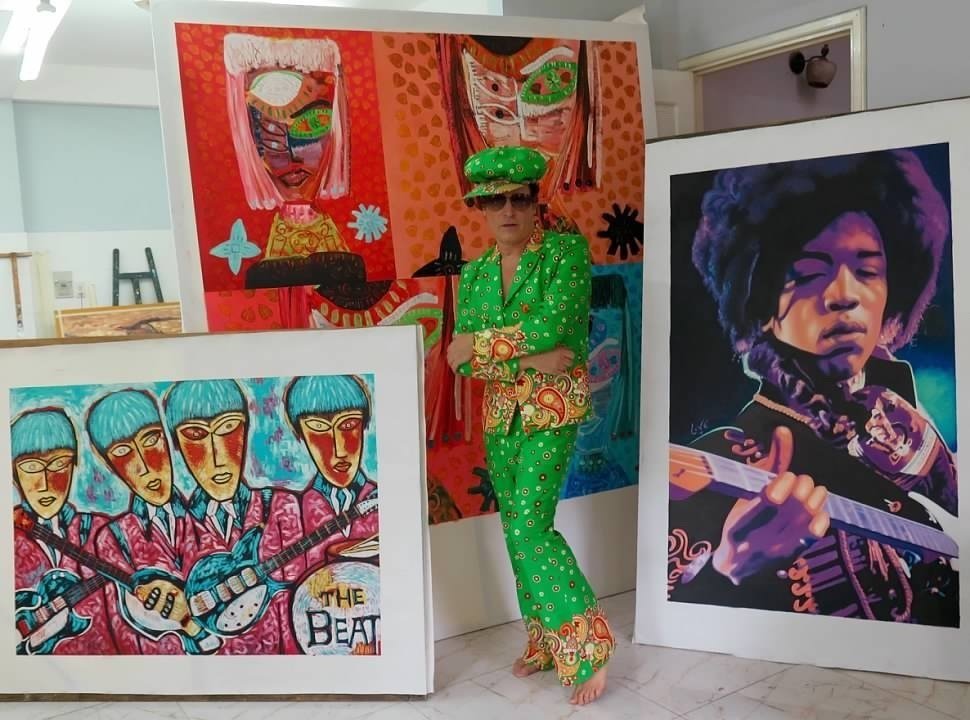
Coldwell Banker Village Green Realty is rich in many things–great locations, great agents, a great feeling of community and… wall space. Our offices sit in communities full of amazingly creative artists, musicians, philosophers, scientists and craftspeople. While our offices can’t offer any scientific research space, we do have large expanses of white wall. With those walls we’ve formed a symbiotic relationship with incredible artists who are also our neighbors. Each of our offices is used as a “Gallery At Work,” where we display the artwork of locals—some up-and-coming, some with international reputations—and invite the public into our galleries. We get to enjoy and be inspired by the art, and sometimes we get to spend time with a special piece before we inevitably bring it home and hang it on our own walls.
Right now we’re exhibiting the paintings of Woodstock artist Justin Love in our Woodstock office at 11-13 Mill Hill Road. Justin is an international traveler and an internationally recognized artist who has shared his paintings with us several times in the decades we’ve both called Woodstock home. We’re thrilled to have some of his works hanging now and took the opportunity to ask him about his art.
A New York City native (via Ohio), Justin Love has been a painter for 30+ years. He spends winters painting in warm places like Jamaica, Vietnam and Thailand. In the Hudson Valley, Justin Love lives in a beautiful 100+/-year-old country church he calls Loveland, a reflection of the modern pop culture he grew up with. He writes of Loveland, “It’s a surreal kaleidoscope of mythical creatures, electrified mysteries, impossible hues and poetic passion all spinning with musical abandon.”
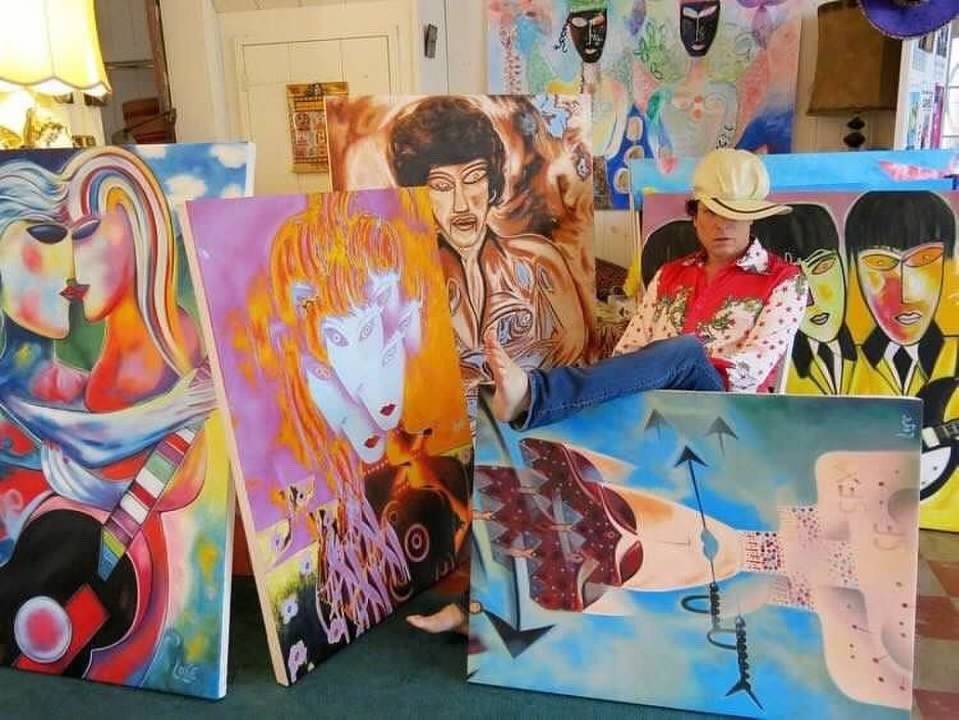
For many years a musician, painting—which he began as a hobby—suddenly captured Justin's vivid imagination, and he’s been a painter since. He's made a big splash with his colorful, appealing work. We spoke with him recently in the Woodstock office of Coldwell Banker Village Green Realty, where he has hung several paintings.
Renee Samuels for CBVGR: I watched the interview from Thailand on your website.
Justin Love: When I made that I was much fresher, younger, very idealistic.
CBVGR: Why, what's changed?
JL: Well, I tell you, I've been stuck here for more than two years, just painting. That's the most I ever stayed Upstate.
CBVGR: That was one of the things I was going to ask: Do you go every winter to one of your warm-weather studios?
JL: Yeah, I go to Vietnam, I have a great studio in Thailand & a studio in Jamaica.
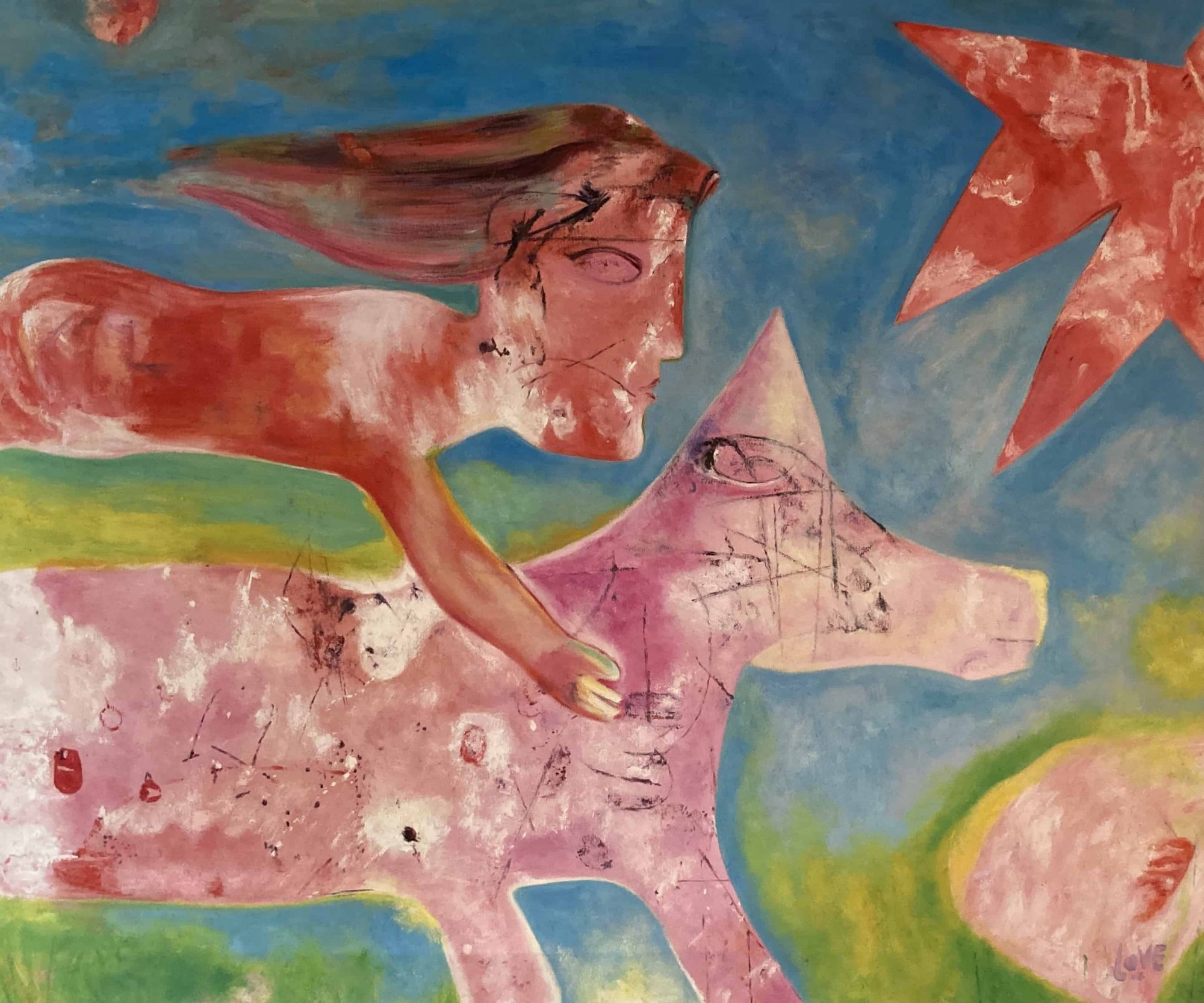
Magic Ride On The Beach 2005, Acrylic, Painted In Costa Rica
CBVGR: I think that's a really important part of who you are as an artist: Part of what you said in the Thailand interview was how being there influenced what you were doing and what you felt passionate about. Being able to go and live wherever you want for however long is quite a different thing from somebody who, you know, works nine to five and then paints on the weekend. You're have access to various environments.
JL: I have to work. It's not easy because you always have to find someone to buy a painting.
CBVGR: And how do you do that? You’ve said you were a musician and then started painting as a hobby and found you were good at it. Did you mean because you liked it or because other people responded? You also said right away you got gallery shows. How did all those things happen? Did they happen easily?
JL: I'm very good at painting, like, I have a gift for it.
CBVGR: But is that something you decided for yourself?
JL: Yeah, if I work on a painting for a certain amount of time, it’s got to be good.
CBVGR: And what do you mean by good?
JL: Captivating, so that I would hang it on my own wall; because I just paint over it if it's not good. When I started out, I was a musician, and I grew up in the pop culture of the ‘60s and ‘70s and it was just a hobby. I just made stuff to see what I could do.
CBVGR: Do you remember the moment when suddenly one day you painted? Did you see something, or was it someone’s work that inspired you?
JL: I like Picasso, I like Van Gogh and I liked the psychedelic posters from the ‘60s, like from the Fillmore and stuff like that. I loved that. I didn't have any feeling that I could be an official artist. I can tell you a story, but it's too long. When the Beatles came out, I wanted to play guitar.
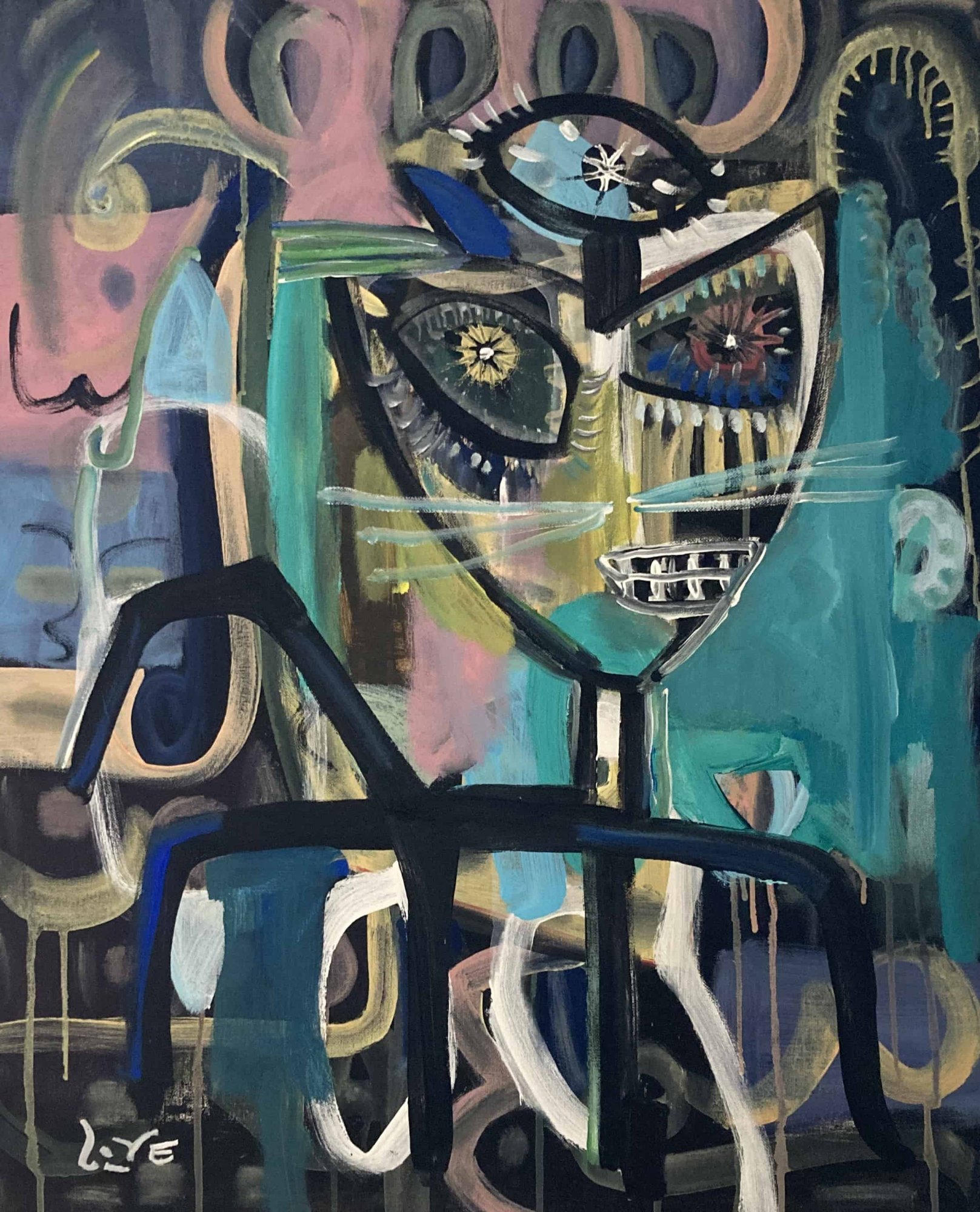
Cornucopia 2020, Acrylic, Painted In Woodstock
CBVGR: You get this idea that something is cool and fun and exciting, and you want to do it, too. But you are an artist to begin with. You have the soul of an artist. It's a different way of looking at the world. I'd like to hear more about your really young days, how you grew up and what it was like and your relationship with your family.
JL: My father was a rabbi.
CBVGR: Oh, that’s huge.
JL: He was the Navy chaplain in Norfolk, and then he got sent to Japan, and when he came back, we moved to Youngstown, Ohio, since I was five years old. So I had like a real outdoor, fun kind of nature growing up: I had a tree house in the woods, and I used to find crayfish and frogs in the creek and I'd swing from the vines over the creek. That was good. My father came back from Japan, and he brought all these paintings on silk, like it'd be Mount Fuji or tropical fish or flowers, and the colors were so vivid. You didn’t really see that in those times, so that made a big impression on me. So that was my first experience with art that I appreciated. They came rolled up in a little tube, and he framed them. That was good.
CBVGR: Was your father an Orthodox rabbi?
JL: Conservative. My father had a sports car and he liked to play golf. He was modern, a 1960s Kennedy-era young man.
CBVGR: Did you love and admire him?
JL: Yeah, when I was a kid. Then later there was a sort of generation gap when the Beatles came out, because, you know, he was a very straight guy, and here I was growing my hair, staying up all night listening to music, dropping out of high school.
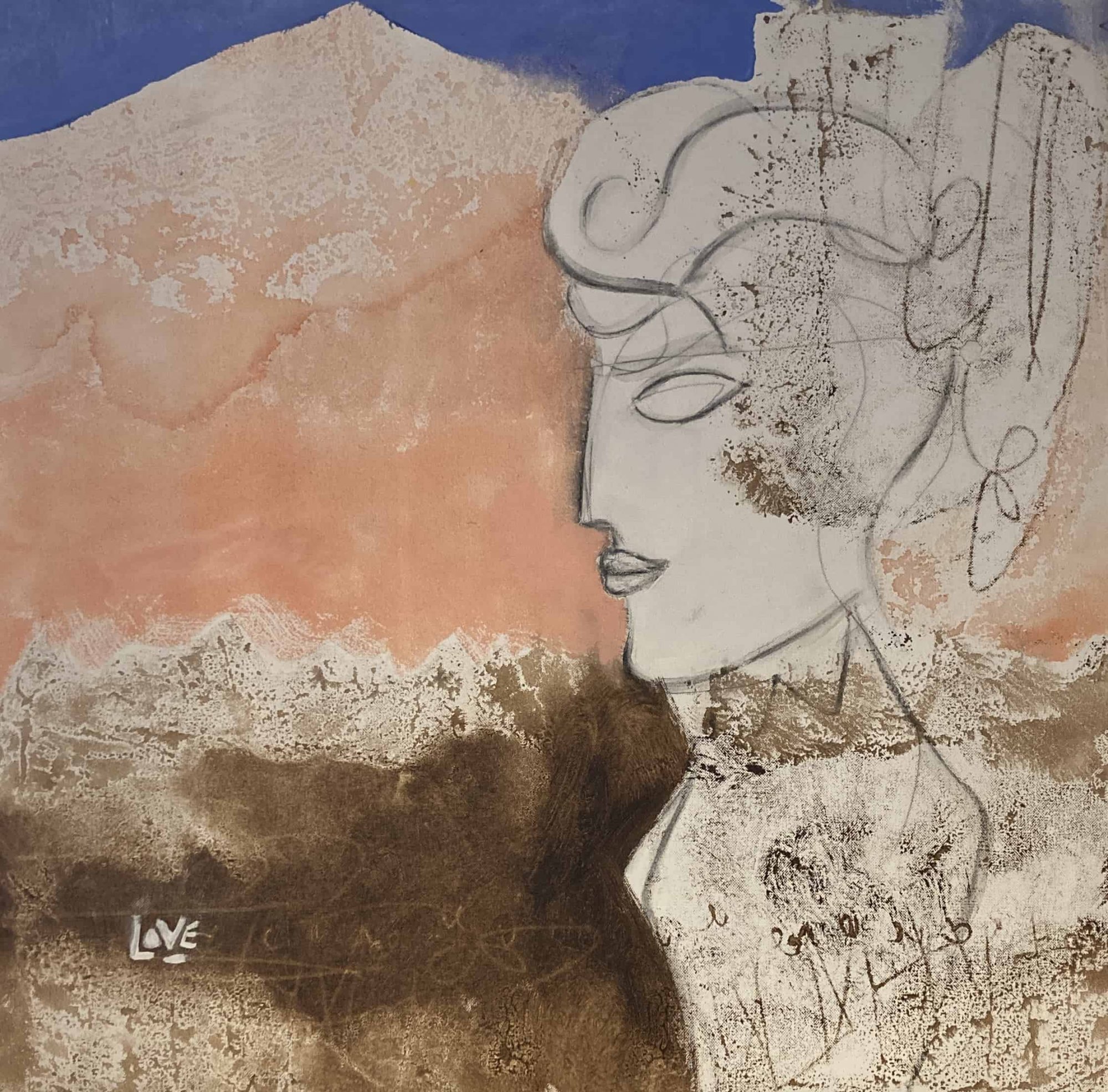
White Lady 2009, Acrylic, Painted In Jamaica
CBVGR: Were you playing music at all at that time?
JL: Yeah. Yeah. We lived in Jackson Heights, Queens. I went to high school at Stuyvesant, and it happened before I dropped out. I could walk to the East Village, which was just starting off. I’d see all the hippie stuff, and I went to the Electric Circus and saw the psychedelic bands, and I thought, ‘Oh, that's the coolest thing.’ So I made the basement of our house at Jackson Heights like the Electric Circus of my own version. I covered all the walls with sheets on wire frames to make it all round, so you're like in the middle of an egg. And I made all these light projectors and things, and I’d play music, and we’d hang out there, and it was a fun time.
CBVGR: And how does your mom enter into all this?
JL: My mom, she was a great, great woman. She's from Belgium. She came over when they ran from the Nazis. Most of her family was killed, like huge amounts of them. If I think about it, I don't know how they kept so strong. Like my grandmother: All her sisters and brothers, maybe seven or eight of them, were killed, her parents and all her cousins.
CBVGR: So your mom came as a little girl with her mother. Your mom and dad met where?
JL: New York. My father lived in Brooklyn, and my mother lived in Manhattan. My father's family came from Russia around 1909. My mother never seemed too wounded by the war and all that. Or my grandmother. If that would have happened to me, I would have been a basket case.
CBVGR: So Justin, when you were young, your grandmother and mother had fled from the Nazis and brought that influence and story into your life.
JL: They never talked about it. But I was aware of anti-Semitism, because I knew about the Nazis. But from the 1960s it was like, we're all family, let's all have a good time and make beautiful things and celebrate life. And my parents came from a time of fear: There's people that hate, people that kill you. And that did affect me on a cellular level.
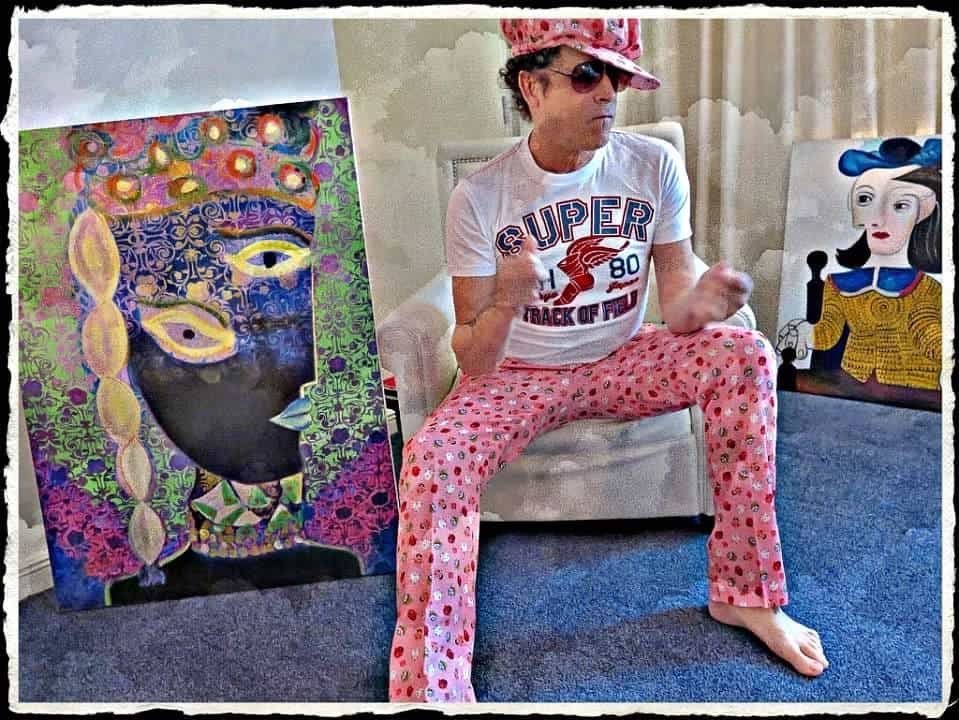
CBVGR: But you broke away from that. You embraced all the culture that was happening.
JL: I still have to fight it all the time, because it makes you insecure. And then being an artist to start with is such an insecure way of living. Because if you sell a painting, you’ve got money, and if you don't sell a painting, you have to charge stuff on credit cards and you get into debt. Sometimes I feel like if I had the choice, I would just be an artist for fun and have another career that’s a big moneymaker. I have two brothers that are doctors. One is a lawyer and they have very secure jobs. They don't have to hustle paintings.
CBVGR: How do you hustle? What do you do?
JL: I do whatever, like hanging paintings in this real estate office. Just down the hill is a store called Casa Ziki, and they've put some of the collage paintings I made in 1995 up, and they sold some of them. I incessantly promote my stuff on Facebook (Justin Love Paintings) and Instagram (@justinlovepaintings). I invite people to come to my studio. I offer them payment plans. I take credit cards. I tell them if they don't love the painting in their house, they can come and exchange it. I try to make it really easy for people to have great art, and I'd like to see them enjoy it instead of it just sitting there.
CBVGR: So how’s it been selling paintings?
JL: I've sold about 3,500 paintings. One guy bought 106 paintings. He has five houses and a hotel. I’d like to get a dozen more like that. The last few years I’ve made kind of realistic dream portraits that I painted in Thailand and Vietnam, about five- or six-foot-tall oil paintings. And they're very beautiful, very magical. Sometimes you can't tell if it's a photograph. I'm looking for a way to sell those.
CBVGR: They're quite different from the more freestyle ones.
JL: Yeah, because these might take two days or four days, five days; those take two months.
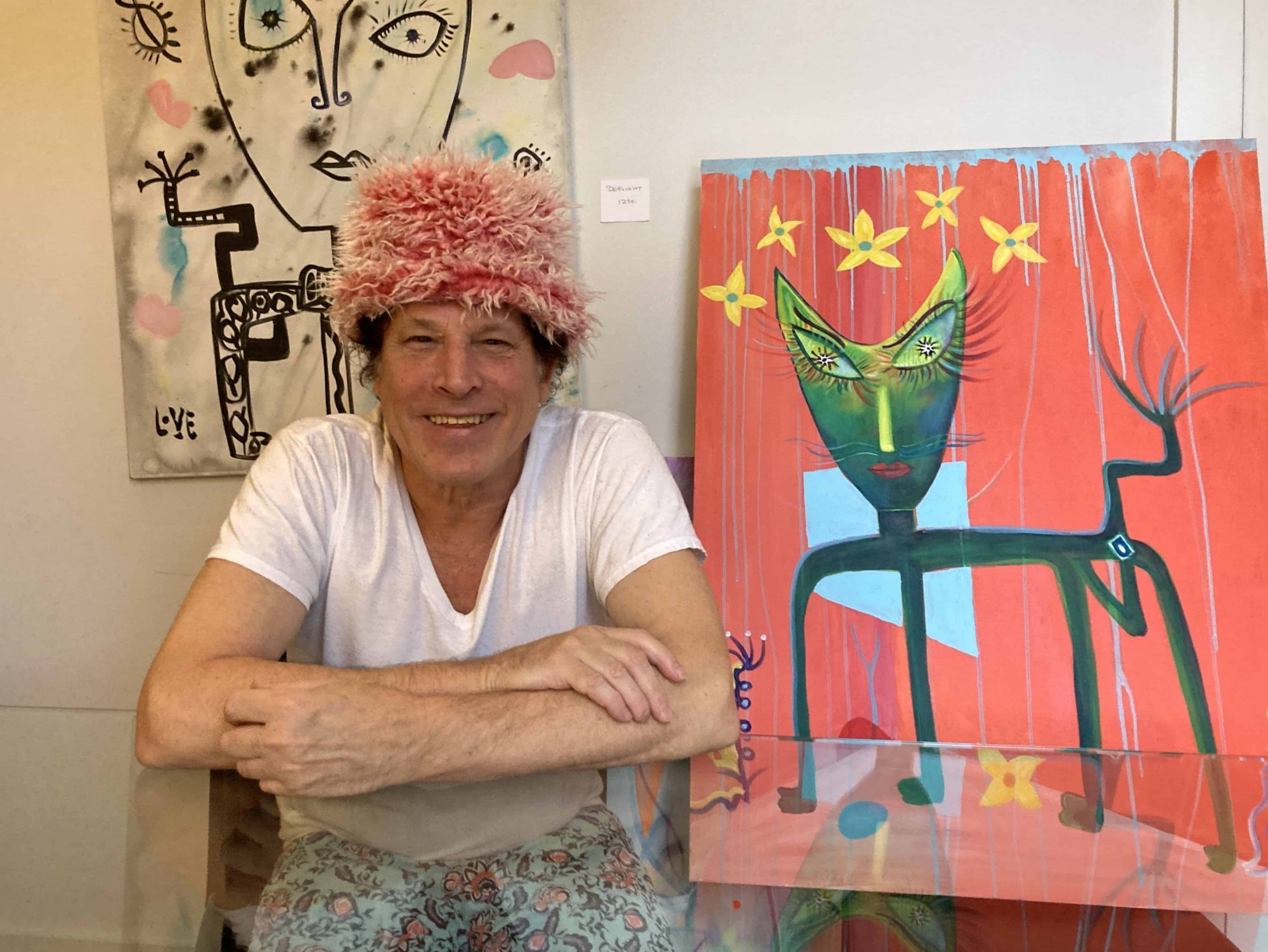
CBVGR: What about your fashion style, the hats and colorful clothes?
JL: Well, I was a rock and roll guy. I played at the New York clubs, and I'd like to get dressed up. When I started out I would find all these great vintage clothes in thrift stores in the City and on Long Island. And I wasn't making enough money with my band, so I sold these vintage clothes to the stores in New York, and I went in the flea market at 76th and Columbus, and I’d have racks of all these tuxedos and suits from the ‘40s and ‘50s and ‘60s. Next to me, there was a guy selling art books and Sotheby’s catalogs for really cheap. So I started buying them, and I learned a lot about art from those books and from the Sotheby's catalogs. You'd see a lot of works by great artists, but they weren't their major works. So you’d kind of see how they got to the point where they made their major paintings by making these small paintings and sketches that were up for auction.
CBVGR: You dropped out of high school. Was that the end of your formal education?
JL: I stayed out of high school for a year or so, and then since I was from this kind of intellectually minded family, I thought I better finish high school, so I took the equivalency from the local high school. I had gone to Stuyvesant before, which was a more advanced curriculum, so even after I took all the time off, I finished before kids from the local high school my age, because I'd had more advanced classes at Stuyvesant. Stuyvesant was a math and science high school, and I was an artistic person. So I wasn't really a fit for all those geeks. And I didn't want to wake up early. I'd say out of 30 days of school, I was late 28 of them, because all night I listened to music. In the ‘60s, I was very interested in all the music. Every day there’d be a new band that was fantastic. I might stay up till four o'clock, five o'clock in the morning, listening on my headphones. So I couldn't get up at seven for school.
CBVGR: And what did your mother do? Was she a homemaker?
JL: She was a homemaker. She had four boys by the time she was 28 or 29. She made lunch for us to take to school and breakfast for us and dinner for us every day of the week for many years. That's a big job.
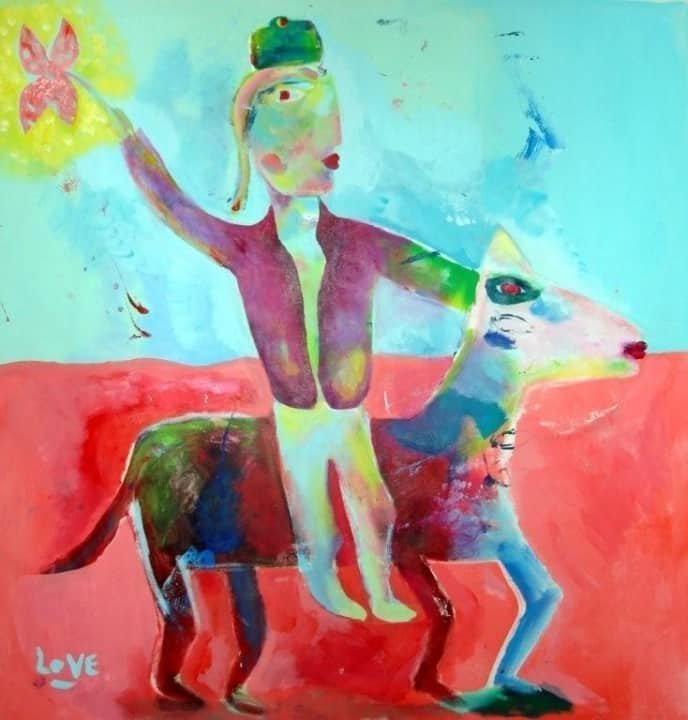
Here In This Amazing Life 2007, Acrylic, Painted In Costa Rica
CBVGR: Especially men, no?
JL: We were a nice a bunch. We were pretty cultured.
CBVGR: And you still communicate with them?
JL: Well, my mother and father passed on a long time ago. My brothers are my friends; I have a psychologist, a lawyer and a veterinarian for brothers. And my younger brother was a very good artist, and I was a musician. But he doesn't do art anymore, and I don't really do music.
CBVGR: You’ve said maybe if you were as successful with your music as you have been with your art, you might be more stimulated to make more music now. Do you still feel that way?
JL: I was really good at music. I've got about 100 songs that could go to the top of the charts, and they're recorded really well, but I couldn't get anything to happen with it. You know, Van Gogh sold only one painting in his life. Now a Van Gogh could sell for $89 million, and it only took him the afternoon to paint it. I feel kind of somehow like that in a way. I mean in the art market I should be the king of the world. I tell you, they love stuff that I cannot picture why they love it.
CBVGR: The collectors?
JL: And the dealers. I tell you, I'm flying on an airplane to Thailand. It’s perfectly designed to take 300 or 400 people safely and comfortably. And it’s all designed by very high-minded people. And the pilot is very high-minded; he can concentrate, knows all the dials and manages it all and gets us all there safely. In the art world, a guy paints a canvas 10’x10’ solid black, and he's admired like the messiah. And if someone posts about him on Instagram, he gets, you know, 16,000 people that admire it, too. What's wrong there? I wouldn't want to fly with a pilot that all he could make up was a 10’x10’ black painting. I think it's the dumbing-down of society.
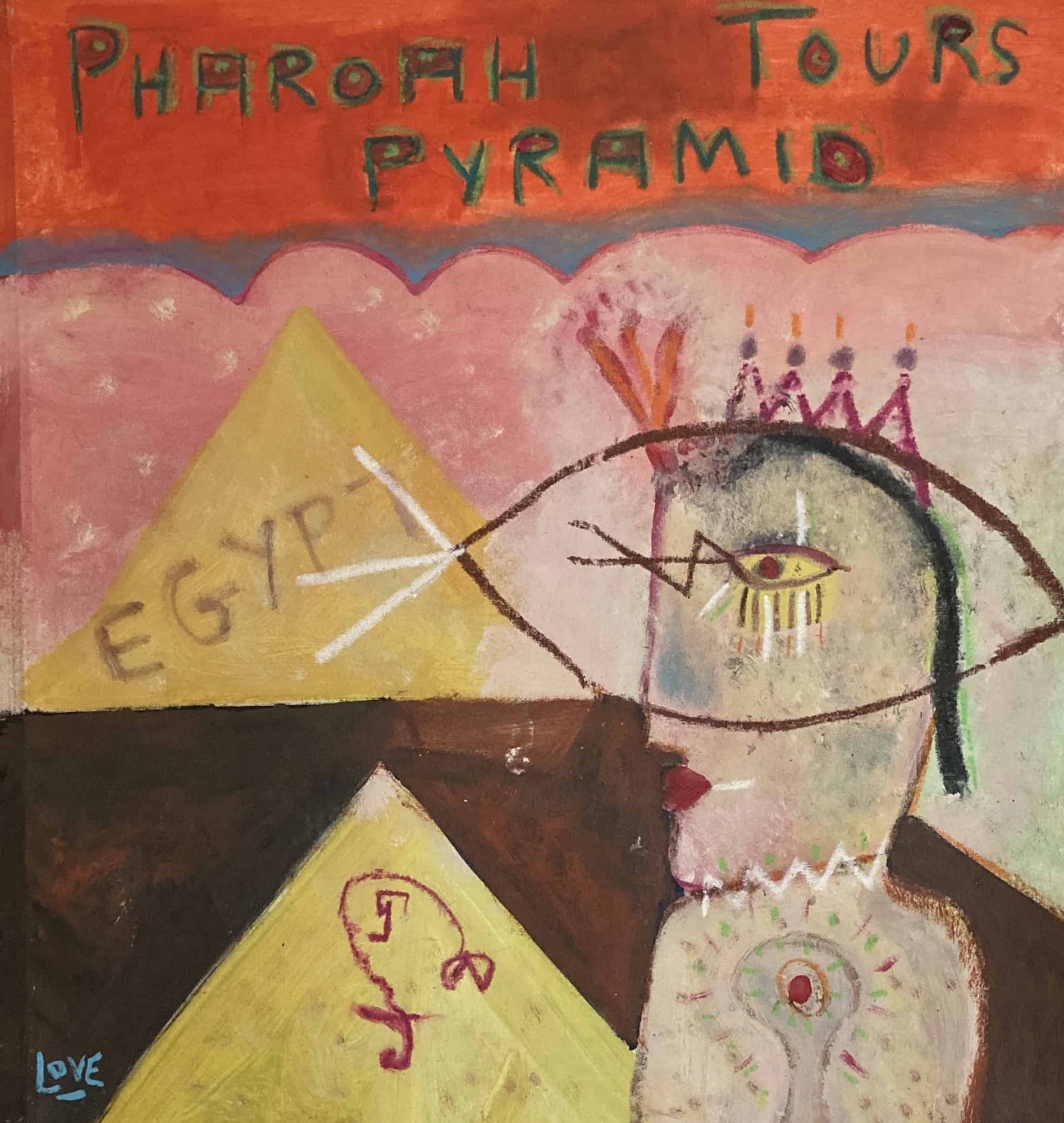
Pharaoh Tours Pyramid 2005, Acrylic, Painted In Costa Rica
CBVGR: Interesting way to look at it.
JL: I read all this metaphysical stuff that says don’t talk about what you don’t want, talk about what you want. But if I don't talk about it, and no one else talks about it, how will there be any discourse about it, and how's it ever going to change? When you spray-paint a pile of logs black and put that in a gallery and say that's sculpture… you can't say that.
CBVGR: Sometimes, beauty doesn’t seem to be a goal anymore.
JL: If you can make beautiful art, and there's places to put it, people can enjoy it, and you can sell it.
CBVGR: What else would you like to add? Would you like people to come to your studio?
JL: Yes, please come to my studio. It’s on Route 212 between Woodstock and Saugerties, 4 Churchland Road, right on the corner of Route 212. My phone number is 845-430-0005, and my email is mrjustinlove@yahoo.com.

Leave A Comment